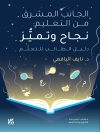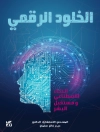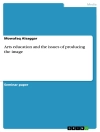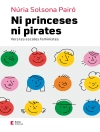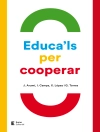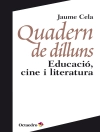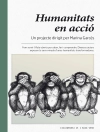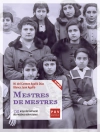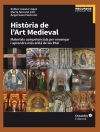In this well-illustrated book the authors, Sinan Kanbir, Ken Clements, and Nerida Ellerton, tackle a persistent, and universal, problem in school mathematics—why do so many middle-school and secondary-school students find it difficult to learn algebra well? What makes the book important are the unique features which comprise the design-research approach that the authors adopted in seeking a solution to the problem.
The first unique feature is that the authors offer an overview of the history of school algebra. Despite the fact that algebra has been an important component of secondary-school mathematics for more than three centuries, there has never been a comprehensive historical analysis of factors influencing the teaching and learning of that component.
The authors identify, through historical analysis, six purposes of school algebra: (a) algebra as a body of knowledge essential to higher mathematical and scientific studies, (b) algebra as generalized arithmetic, (c) algebra as a prerequisite for entry to higher studies, (d) algebra as offering a language and set of procedures for modeling real-life problems, (e) algebra as an aid to describing structural properties in elementary mathematics, and (f) algebra as a study of variables. They also raise the question whether school algebra represents a unidimensional trait.
Kanbir, Clements and Ellerton offer an unusual hybrid theoretical framework for their intervention study (by which seventh-grade students significantly improved their elementary algebra knowledge and skills). Their theoretical frame combined Charles Sanders Peirce’s triadic signifier-interpretant-signified theory, which is in the realm of semiotics, with Johann Friedrich Herbart’s theory of apperception, and Ken Clements’ and Gina Del Campo’s theory relating to the need to expand modes of communications in mathematics classrooms so that students engage in receptiveand expressive modes. Practicing classroom teachers formed part of the research team.
This book appears in Springer’s series on the “History of Mathematics Education.” Not only does it include an important analysis of the history of school algebra, but it also adopts a theoretical frame which relies more on “theories from the past, ” than on contemporary theories in the field of mathematics education. The results of the well-designed classroom intervention are sufficiently impressive that the study might have
created and illuminated a pathway for future researchers to take.
Spis treści
Identifying a Problem with School Algebra.- Historical Reflections on How Algebra Became a Vital Component of Middle- and Secondary-School Curricula.- Framing a Classroom Intervention Study in a Middle-School Algebra Environment.- Document Analysis: The Intended CCSSM Elementary- and Middle-School Algebra Curriculum.- Review of Pertinent Literature.- Research Design and Methodology.- Quantitative Analyses of Data.- Qualitative Analyses of Data.- Answers to Research Questions, and Discussion.- Postscript: Framing Research Aimed at Improving School Algebra.
O autorze
Sinan Kanbir is an Assistant Professor of Mathematics Education, University of Wisconsin—Stevens Point. He received his Ph.D. in mathematics education from Illinois State University, a masters degree in computer and educational technology from Marmara University, and a bachelors degree in mathematics education from Gazi University. Prior to his appointment at UW-Stevens Point, he had taught mathematics at the middle- and high-school levels, and university-level courses for prospective middle- and elementary-school teachers. His main research interests include the development of students’ and teachers’ algebraic reasoning, particularly in the elementary and middle grades, and the development of pre-service and in-service teachers’ mathematical knowledge for teaching. He currently teaches elementary and middle-school mathematics pre-service teacher courses. His main research has been in the areas of algebra education and the history of school mathematics.
Nerida F. Ellerton has been professor in the Department of Mathematics at Illinois State University since 2002. She holds two doctoral degrees—one in Physical Chemistry and the other in Mathematics Education. Between 1997 and 2002 she was Dean of Education at the University of Southern Queensland, Australia. She has taught in schools and at four universities, and has also served as consultant in numerous countries, including Australia, Bangladesh, Brunei Darussalam, China, Malaysia, the Philippines, Thailand, the United States of America, and Vietnam. She has written or edited 18 books and has had more than 150 articles published in refereed journals or edited collections. Between 1993 and 1997 she was editor of the Mathematics Education Research Journal, and between 2011 and 2014 she was Associate Educator of the Journal for Research in Mathematics Education. In 2016 she received an award for top researcher at Illinois State Unive
rsity.
M. A. (Ken) Clements’s masters and doctoral degrees were from the University of Melbourne, and at various times in his career he taught, full-time, for a total of 15 years, in primary and secondary schools. He has taught in six universities, located in three nations, and is currently professor in the Department of Mathematics at Illinois State University. He has served as a consultant and as a researcher in Australia, Brunei Darussalam, India, Malaysia, Papua New Guinea, South Africa, Thailand, the United Kingdom, the United States of America, and Vietnam. He served as co-editor of the three International Handbooks of Mathematics Education—published by Springer in 1996, 2003 and 2013—and, with Nerida Ellerton, co-authored a UNESCO book on mathematics education research. He has authored or edited 33 books and over 200 articles on mathematics education, and is honorary life mem
ber of both the Mathematical Association of Victoria and the Mathematics Education Research Group of Australasia.


